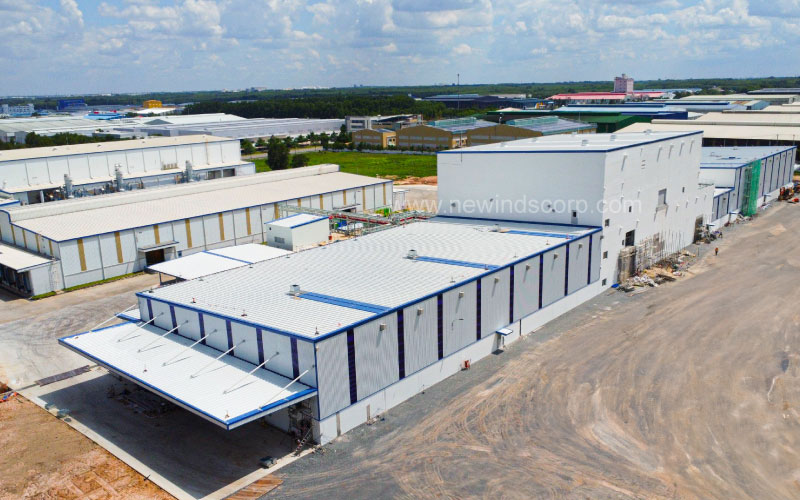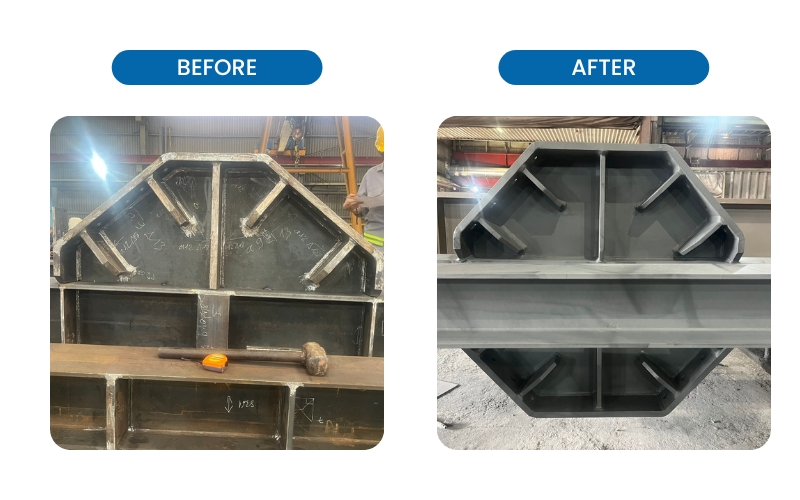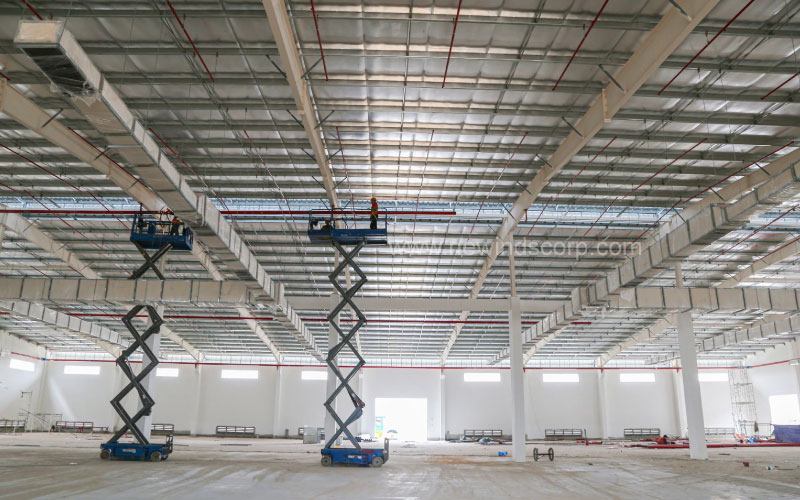Steel structures are widely used in the construction of factories, warehouses, manufacturing plants, and public buildings. Why are other construction methods less preferred while steel structures are chosen in most cases? What benefits do steel buildings offer, and when should or should not they be used? Newinds will help you answer all these questions in the article below.
WHAT ARE STEEL BUILDINGS?
Steel buildings are composed of a primary load-bearing steel structure that serves as the main frame of the building, along with roof and wall systems that complete the overall structure, while bolts and fasteners are used to connect the steel components together to form a finished building.
- Mainframe: columns, beams, and rigid frames/portal frames
- Secondary frame: purlins, girts, bracing, cladding supports
- Roof & Wall Cladding: Roof, wall, and skylight systems
- Foundation: strip foundation, pile foundation, or slab foundation
- Related auxiliary systems: drainage, insulation, and ventilation systems
- Connection systems: bolts, rivets, and steel welding
The main steel components and frames are designed based on specific customer requirements for shape and size. This allows for flexibility in design and makes it easy to create modern buildings suitable for practical needs such as steel sheds, barns, garages, or other commercial purposes. The components are then fabricated in a controlled process, meeting the quality standards required in each market.
After being transported to the construction site, steel frame buildings are assembled and connected using nuts, bolts, or welding. This results in a completed structure in a short period, significantly saving time and labor costs for assembly.
THE PROS AND CONS OF STEEL BUILDINGS
-
Pros of Steel Buildings
Cost Savings: Since most steel structure is manufactured in the factory and only require assembly on-site, it saves significant time and labor costs, leading to overall cost savings on investment. This is a key benefit of modern structural steel fabrication, which streamlines production and minimizes delays during construction.
High Durability and Long Lifespan: Steel frame buildings can withstand high loads and endure harsh weather conditions. Moreover, steel components are treated with an epoxy coating or hot-dip galvanizing during the manufacturing process to enhance internal protection and resist environmental corrosion.
Flexible Design: Steel has excellent malleability, making it easy to form custom shapes and sizes for specific structures. Additionally, steel allows for large spans without the need for numerous columns or beams, creating expansive usable spaces.
Environmentally Friendly: Steel structures can be dismantled and reassembled for different uses with ease. Investors can repurpose the structures for new projects or recycle them to support environmental sustainability.
-
Cons of Steel Buildings
High initial investment cost: Steel materials for steel buildings are often more expensive. However, if the building is used long-term, this cost will be significantly offset, leading to greater savings in the long run.
Risk of corrosion: Steel is highly susceptible to rust if not properly protected and regularly maintained. Some effective ways to address this issue include applying anti-rust paint, using hot-dip galvanization, or employing cathodic protection.
Thermal conductivity issue: Steel conducts heat well, making the building hotter in summer and colder in winter. This increases the costs for cooling and heating.
APPLICATIONS OF STEEL BUILDINGS
-
Commercial and Office Space Buildings
-
Residential Projects
-
Industrial Structures
-
Infrastructure & Public Buildings
CHOOSE A STEEL BUILDING FABRICATOR IN VIETNAM
As a fabricator of custom solutions for steel fabrication, we supply a wide range of specialized structural steel, including pre-engineered steel buildings, warehouses, steel sheds, barns, farm storage, … and more.
We operate within a Quality Management System (QMS) that has maintained ISO 9001:2015 certification, ensuring quality assurance throughout our processes. Our products also meet international fabrication standards such as ASTM Standards, AS/NZS Standards, EN Standards, among others.
If you are looking for a high-quality steel building fabricator for your project, please contact Newinds for a tailored solution that meets your project’s specific needs.
Contact Newinds today to discuss your requirements
Email: sales@newindscorp.com
Phone/Whatsapp: +84 868 482 038


